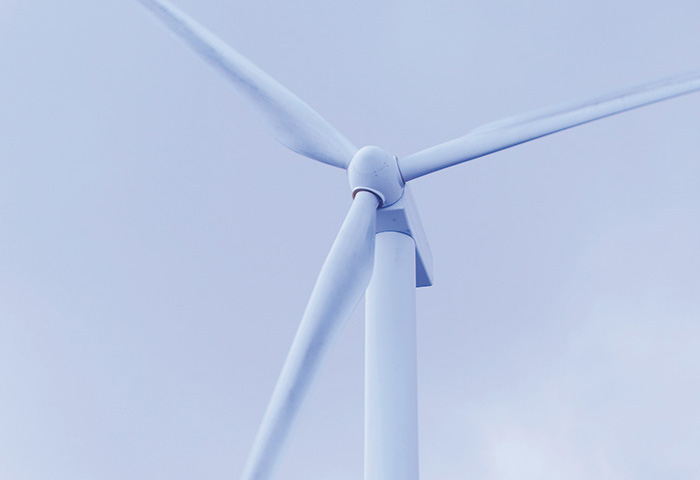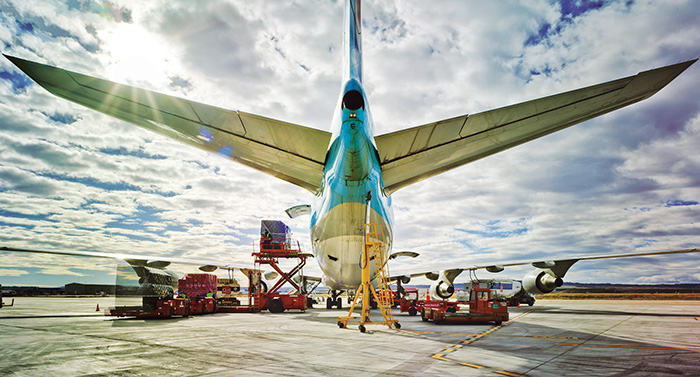Efficient use of resources throughout the business model

Objective
Reduction by 20% of own operations’ energy intensity for each item put onto the market by 2020.
Reaching 100% of eco-efficient stores by 2020
Opportunity
To reduce energy consumption to improve the efficiency of processes and to enable environmental sustainability
Material issues
18. Energy consumption in the supply chain (manufacturing)
25. Direct consumption of energy and GHG (scope 1)
26. Indirect consumption of energy and GHG (scope 2)
27. Consumption of energy outside the organisation and GHG (scope 3)
28. Waste production and recycling
30. Dialogue with and commitment to stakeholders
In 2013, Inditex published its Global Energy Strategy, thus recognising that this is a key component in the textile sector. Its aim is to promote a rational and efficient use of energy throughout the value chain by reducing greenhouse effect gas emissions and helping to mitigate their effects. It is framed within the Group’s Sustainability Strategy, which is closely linked to Water and Biodiversity strategies.
The principal energy objectives drawn up in line with those of the United Nations for 2030 and those of the European Union for 2020 are:
- To reduce total energy consumption within Inditex’s value chain by reducing the use of energy obtained or derived from fossil fuels.
- To reduce Inditex’s energy intensity for each garment sold. In this way, more garments on the market would not necessarily mean a proportional increase in energy consumption.
- To mitigate the direct and indirect emissions of greenhouse effect gases by promoting the sustainable purchase, use and management of energy.
- To reduce energy and emissions related to the phases of production, use and end of life, taking action from the initial stages (such as the selection of more ecological raw materials) to their recycling.
Further information at http://www.inditex.com/en/sustainability/environment/energy
Although this section focuses on the activities carried out in logistics and distribution, stores and head offices, as is shown in the graph below, Inditex is carrying out initiatives for efficient energy management in each and every link of the value chain.
Principal initiatives developed under the Global Energy Strategy in 2013
| GLOBAL ENERGY STRATEGY |
Raw materials |
|
|
| Manufacturing |
|
||
| Logistics |
|
||
| Stores and head offices |
|
||
| Product, use and end of life |
|
||

Inditex continues to endorse international initiatives such as The Sustainable Apparel Coalition (SAC) to promote lower energy consumption and access to safer energy sources in the supply chain.
Inditex includes the directives of this strategy in its logistics activities and in its headquarters and stores.
Environmental and energy management in logistics centres
All of Inditex’s logistics centres have an Environmental Management System certified in accordance with the ISO 14001 international standard and all staff in the logistics centres have received environmental training. Furthermore, in 2013 work began to include an energy management system in the ISO 14001 Environmental Management System.
Sustainable certification in logistics centres
The LEED certification awarded by the U.S. Green Building Council is one of the most prestigious sustainable construction standards in the world. It measures the level of environmental respect in buildings, assessing their location, their water management, interior environmental quality, the materials used and the energy behaviour of the construction. The Inditex logistics centre in Cabanillas (Guadalajara), which will enter into operation in 2014, is taking part in the LEED certification process in the Gold category.
At the close of 2013, the Tempe 3 logistics centre had achieved BREEAM certification. This is one of the most advanced methods for assessing and certifying building sustainability in the world. The certification covers the various phases of building design, construction and use. Similarly, a Sustainable Management Manual has been drawn up for the Tempe 3 logistics centre.
This manual contains the guidelines and specific goals for Tempe 3 regarding sustainability. These goals, aligned with Sustainable Inditex 2011-2015, are clustered into four strategies: energy strategy, water strategy, waste reduction strategy and air quality strategy.
Environmental training in logistics centres
In 2013 Inditex initiated a new training programme for logistics centres with the aim of making workers more aware of the benefits of correct environmental management. Two workshops were held focusing on the sustainable management of energy resources and how this can affect people’s day-to-day life and the health of the environment. In 2014, another two workshops will be performed focusing on efficient water use and sustainable waste management, respectively.
Carbon footprint of logistics operations
The company’s transport and distribution operations are performed entirely by external operators. Therefore, the Greenhouse Effect Gases (GHGs) associated with these activities are considered scope 3 emissions according to GHG Protocol criteria.
Inditex has developed a tool for better management and control of these emissions which enables such emissions to be calculated according to GHG Protocol, while at the same time offering suggested improvement plans for logistics operators in order to reduce emissions. This emission calculation tool for logistics operations is already in operation in Tempe, covering more than 6,000 stores and over 63,000 operations in 2013.
Eco-efficient stores
Stores represent one of the key areas of Inditex’s business model. All of the Group’s stores are built in accordance with the Inditex Eco-efficient Store Manual, which gives technical instructions for electrical installations, HVAC, plumbing, lighting, furniture and waste installations. Moreover, in 2013 a Manual of Waste Management in Stores was drawn up as a complement to the Eco-efficient Store Manual. This manual describes the measures applied in stores to reduce waste production, to reuse waste and to manage it in the most correct way. Supplier compliance with ZNormativa requirements on the packaging and distribution of products and the commitment of all employees to the Waste Minimization Plan have allowed Inditex to reduce waste generation and improve waste management. This own waste management model enabled the recovery of more than 72 million plastic hangers used in sending garments to stores. These hangers were classified and sent back to the factories and workshops for reuse.
Since 2007, more than 1,300 eco-efficient stores have been built around the world. The sustainability and energy efficiency measures implemented in these stores contribute savings of 30% in the case of electricity and 50% in water consumption compared to conventional stores. It is hoped that by 2020, all Inditex stores will be 100% eco-efficient.
In support of the eco-efficient store strategy, some individual stores have obtained LEED certification. This is the case of the Zara Park House (London), which was awarded LEED Platinum certification. The following stores received LEED Gold certification: Zara Madero (Mexico D.F.), Zara and Zara Home Champs Élysées (Paris), Zara West Nanjing (Shanghai), Zara Kalverstraat (Amsterdam) and Zara Haas Haus (Vienna).
Several other stores are also in the process of obtaining certification: Zara Serrano (Madrid), Bershka Colón (Valencia) and Zara Krakow (Poland) are seeking LEED Platinum certification, while Massimo Dutti Palma de Mallorca is seeking LEED Gold certification.
Eco-refurbishments
Eco-refurbishments have been carried out in stores opened before 2007 in order to reduce their electricity consumption by up to 30%. They follow the guidelines set out in the Eco-efficient Store Manual. In 2013 Inditex refurbished 423 stores in line with eco-efficient parameters.

